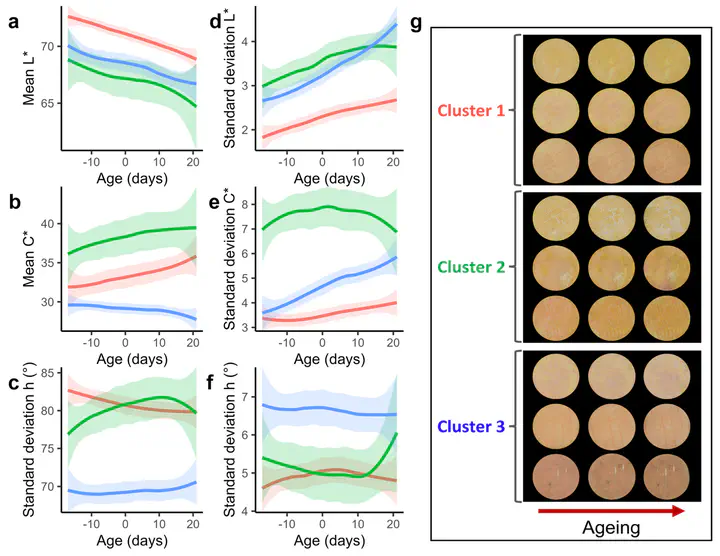Deciphering Rind Color Heterogeneity of Smear-Ripened Munster Cheese and Its Association with Microbiota

Abstract
Color is one of the first criteria to assess the quality of cheese. However, very limited data are available on the color heterogeneity of the rind and its relationship with microbial community structure. In this study, the color of a wide range of smear-ripened Munster cheeses from various origins was monitored during storage by photographic imaging and data analysis in the CIELAB color space using luminance, chroma, and hue angle as descriptors. Different levels of inter- and intra-cheese heterogeneity were observed. The most heterogeneous Munster cheeses were the darkest with orange-red colors. The most homogeneous were the brightest with yellow-orange. K-means clustering revealed three clusters distinguished by their color heterogeneity. Color analysis coupled with metabarcoding showed that rinds with heterogeneous color exhibited higher microbial diversity associated with important changes in their microbial community structure during storage. In addition, intra-cheese community structure fluctuations were associated with heterogeneity in rind color. The species Glutamicibacter arilaitensis and Psychrobacter nivimaris/piscatorii were found to be positively associated with the presence of undesirable brown patches. This study highlights the close relationship between the heterogeneity of the cheese rind and its microbiota.